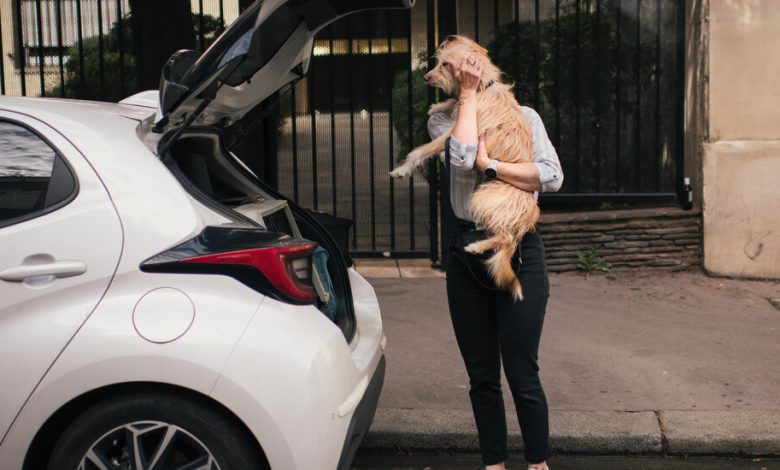The Problem With Pests May Be in Parisian Heads, Not Their Beds

The owners were convinced they had been infested by bedbugs again.
They stripped their house of every piece of clothing, every last picture frame, every book and children’s toy where a bedbug might hide, and stuffed it all inside garbage bags to be stored outside, in a tent in their back yard in a village an hour east of Paris.
As soon as they returned from work or school, they pulled off all their clothing in the garage, and bundled it directly into the washing machine set for a bedbug-destroying 140 degrees Fahrenheit (60 degrees Celsius), before stepping foot inside the house.
They hired professionals to spray all their furniture and surfaces with a bug-killing chemical.
And then they called for a bedbug sniffing dog and its expert handler to assure them that all their efforts had paid off.
“They are paranoid now,” said Emilie Gaultier, co-owner of Dogscan, a French canine bedbug detecting company that has been inundated with messages from panicked residents over the past few weeks.
Her dog Rio toured all three floors of the empty house and never once told her he smelled one of the small bloodsucking bugs, by putting his paws on her waist and then sitting down. That meant either all their efforts had worked, Ms. Gaultier determined, or had been an manifestation of extreme anxiety. She thinks they likely didn’t have an outbreak in the first place.
“This whole media thing, it’s retraumatizing people who have had bedbugs,” said Ms. Gaultier, “and traumatizing others who never had it.”
Bedbugs are crawling across Parisian sheets and chairs, and they are infesting French minds. While the number of pests may be up modestly in Paris, experts say, the explosion of national anxiety over them far outpaces their growth.
Social media transmitted videos of them in Parisien cinemas, trains and subways. The topic has proliferated across radio, television and newspaper pages. Politicians have made speeches and held press briefings. The country’s leading bedbug expert, Jean-Michel Bérenger, who has converted his basement in southern France into a bug lab, has become a household name.
Yet, as the phones of specialized bedbug detectors and disinfection services have been ringing incessantly, some of the callers don’t even have bedbugs.
“I’ve never seen a panic like this,” said Thibault Buckley, answering the phone from the office of bedbug canine detection agency ATN in eastern France. As many as two-thirds the calls to exterminators are from people who have seen something that “has nothing to do with a bedbug,” he said.
Some 12 schools reported bed bugs last week, according to Minister of Education, out of almost 60,000 schools across the country.
The estimated number of calls to exterminators have increased by 9.7 percent over the past year, from 997,900 to 1,095,000, according to figures from the national pest control trade association. But that jump comes as travel has increased since the end of the Covid pandemic, experts say, so a boost would be expected.
“There is a real psychosis,” said Mr. Bérenger, an entomologist at Mediterranean University Hospital Infection Institute in Marseille where he has been studying — and breeding — bed bugs for ten years. “This is the first time people have called to ask me to come to their home to check for bedbugs when they haven’t been bitten, they haven’t traveled, but they are afraid they have them since they saw things on the internet.”
Commonplace before World War II, bed bugs were all but eradicated by DDT — the deadly synthetic insecticide that was banned in the United States and France in 1970s because of its persistent toxic effects on animals and humans. The flat brown bugs that are the size of an apple seed and feed on human and animal blood mostly at night made a comeback worldwide in the 1990s, propelled by pesticide-resistance, the uptick of secondhand shopping and international travel.
“Population movement is favorable to bedbugs. They don’t fly, they don’t jump, they move with us,” Mr. Bérenger said.
In 2020, the national government set up a bedbug hotline and online information campaign that helped people diagnose and solve the problem. It also launched a national study, which was released in July, revealing an estimated 11 percent of French households were infested by bedbugs between 2017 and 2022.
Over the past decade, calls for detection and treatment — and accompanying news stories — have peaked in the fall, soon after “la rentrée” — the regular French return home after August vacations, often with bedbugs inconspicuously stowed in their luggage, Mr. Bérenger said.
This year, the combination of the study’s release, politics and the breathless media cycle had magnified the issue, he theorized.
“There’s a media frenzy,” said Mr. Bérenger, adding that his daily calls from journalists have turned to the obscure or hyper-specific, as they hunt for new takes on a story that has been exhausted. “Someone just called me to talk about essential oils.”
The coronavirus pandemic changed things, too. The thought of picking up a bug in a public place and bringing it home rubs a raw nerve.
“It’s true that the home has truly become the last fortified castle. The bed and bedroom are truly the last bastion of people’s home. And it’s true that bedbug infestation is very, very upsetting,” Mr. Buckley said.
“You can be infested with fleas, lice, mites, but bedbugs come and bite you at night while you sleep,” he said. “It perhaps brings back childhood nightmares — it’s a vampire that’s coming.”
Ms. Gaultier has a different theory. She runs Dogscan with her older sister Julie, who brought an American dog trained to detect bedbugs to France in 2010, after reading in The New York Times about their detective roles during an outbreak in New York City. Over years, the women have found their jobs often veering into life coaching and therapy.
Bedbugs, Emilie Gaultier says, draw deeper problems to the surface and become their focus and symbol. She has worked with many couples for whom bedbugs were the final straw to break their unhappy marriages. Many women disclose they are in abusive relationships while she and her dog Rio search their homes, she says.
“One day, a lady said, ‘If I have bedbugs, I’m jumping out the window’,” said Ms. Gaultier, walking Rio, a ginger Portugese Podengo she adopted after he followed her for two days along a hiking trail.
For people who are already very unsettled, she said, “bedbugs eat at their fragile mental states.”
“Bedbugs have this magic ability to take any baggage or anxiety you have and focus it,” she said. “They become the tip of the iceberg.”
The hysterical action she’s witnessed over the past couple weeks — from tearful would-be clients — is a collective outpouring of anxiety over many unresolved social crises the country has faced over the past three years. She cited the Yellow Vest protests, the coronavirus pandemic, the Russian invasion of Ukraine, the French government’s unilateral decision to hike the age of retirement despite massive protests, and the current increase to the cost of living.
“All of the anxiety of all of the years that these social crises have been happening are coming up,” she said. “And it’s becoming bedbugs.”





